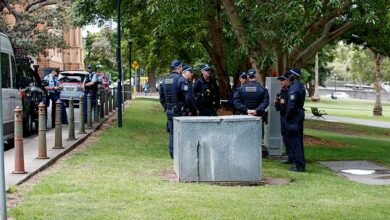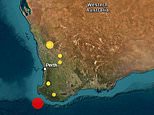The astonishing amount Australian families REALLY pay in tax – and why it’s a lot more than the amount on your payslip

The average Australian now pays almost half their salary in tax after government spending hit its highest level since World War II, a report has found.
The Centre for Independent Studies, a conservative think tank, calculated that the average working couple paid up to 45 percent of their wages to the government in the 2023-24 budget year.
That was based on the federal income tax plus other levies, from the GST to state and municipal levies. It is the highest rate in decades.
Robert Carling, a senior fellow at the Centre for Independent Studies, calculated that the tax burden would be at least 35 percent of household income in 2023-24. Taking into account other taxes related to consumption and property ownership, this could rise to 45 percent.
This came after government spending as a percentage of the economy reached its highest level since World War II during Covid, before stabilizing to its highest level in two decades.
“This benchmark has not been this high in Australia since at least World War II, when taxes were very high to fund the war effort,” he said in a research paper, The Truth About The Tax Burden.
Income taxes continue to be the largest source of revenue for the federal government.
But the Centre for Independent Studies said the latest stage three tax cuts, which came into effect on July 1, would do little to reduce Australia’s overall tax revenues.

The typical Australian now pays almost half their salary in tax, despite the latest tax cut (pictured is Brisbane’s Queen Street Mall)
During a cost of living crisis, Australians are also burdened with local government rates and state government levies. from motor vehicle tax to stamp duty on real estate and land tax.
The report found that Australia has at least 125 different taxes, 10 of which account for 90 percent of government revenue.
“At the individual level, all taxes come out of one income, whether they go to Canberra or to the state governments,” Carling said.
“When you consider all the taxes, it’s amazing how much tax we pay.”
Labor’s revised third-stage tax cuts will give the average full-time worker on an annual income of $100,017 an extra $804.
But Mr Carling argued the tax relief represented just three per cent of Australia’s total tax revenue, spread across three levels of government.
Total Australian Government Expenditureas a percentage of gross domestic product, was 44 percent in 2020-21, at the start of the pandemic.
According to Mr Carling, growth has now fallen, but is still above 35 percent of GDP.

The Centre for Independent Studies, a conservative think tank, calculated that the average worker paid 45 percent of their wages to the government – the highest amount since World War II (pictured is Chancellor of the Exchequer Jim Chalmers)
Tax revenues as a percentage of GDP were estimated at 30 percent in 2023-24.
“It’s fair to say that this tax burden is about as high as it’s ever been in peacetime,” he said.
This is comparable to 2001, when tax revenues made up the largest share of government income since World War II.
Prime Minister Anthony Albanese’s Labor government has achieved successive budget surpluses, built on corporate tax revenues from high iron ore prices.
But the policy of the previous coalition government, which limited tax revenues to no more than 23.9 percent of GDP, has now been abandoned.
“This may be because in practice it is not possible for any government to accurately monitor the ratio,” Carling said.
“But it is more likely that the new government will want to spend more and not be bound by a tax ceiling.”
While government spending as a percentage of the economy during Covid was the highest since World War II, government revenues as a percentage of GDP were not, because The Australian government has not raised taxes during the pandemic.
Since the Covid pandemic, Victoria’s Labor government has imposed a series of Covid levies to raise $8.6 billion.
This included a flat tax of $975 for property investors, to help fund Melbourne as the most closed off city in the world.
Mr Carling said the tax burden on Australians could only be reduced if federal, state and local governments made efforts to reduce costs.
“There will be pressure to further increase the tax burden to record highs unless federal and state governments make a concerted effort to rein in spending growth and make it more effective in achieving the goals,” he said.




